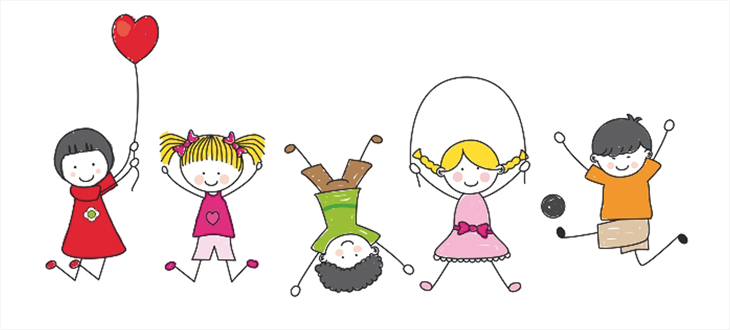Conduct usability testing or experience cones

A small collection of tips and conclusions about usability testing.
Everything that you read below is based on personal experience and observation, and therefore does not claim to be the ultimate truth. I'd like to believe that this will make it easier for someone and the number of stuffed cones.
')

Testing friends and colleagues
Of the advantages, the first lines of the charts are taken by saving time, money and effort in searching for respondents.
And now about the minuses and pitfalls.
Acquaintances
Familiar can be so good that, in an attempt to save your self-esteem, completely overwhelm the test results.
It would be inconvenient for them to say that such a rare garbage is in the prototype, which can only be understood by having two higher technical educations and ten years of experience in designing aircraft control systems.
By the way, not only acquaintances can suffer the fear of offending, sometimes unfamiliar test users suffer from this disease.
At the moment when they find out that here and now is the developer of the product, which they mercilessly criticized just five minutes ago. The degree of criticism decreases sharply and everything turns out to be not so bad. In general, the benefits of such testing is rapidly going to zero.
Another pitfall from friends: here you sit all so smart, test here, you know. A friend also wants not to lose face, so to speak. In this situation, there may be several options: they will be afraid to make a mistake, to pretend, “But I didn’t really want to,” or to be clever, “Yes, I haven’t seen this before. Any option for the purity of the experiment is useless.
Colleagues
With good colleagues, the situation can be the same as the situation with good friends.
Colleagues whom you pulled “literally for five minutes”, having torn off, perhaps, from important work, will be inattentive and will try to get rid of you in a hurry.
What to do
when time is running out and test is still needed?
"Good," ask not to be shy and criticize all the shortcomings, as any criticism in this case only for the benefit.
Fearful warn that test not his abilities, and the results of their work. If something did not work out, then it is not he who is a fool, but you did not take it into account.
A user is desirable not to say that he is sitting in the same room with the developer. Well, just in case.

Male and female audience
According to my observations, the female mind is more flexible and it is easier for him to dummify or imagine something, men are more specific and it’s not up to you to say that.
Therefore, if there is still not a complete prototype on hand and somewhere you need to show imagination and, suppose, present a pop-up window on click, take women.
Men are better suited more complete version of the prototype with all drop-down and pop-up windows.

Setting user-related tasks
About the fact that for testing they are gaining "their" target audience, it has already been said before me. I will say a little about the problem.
They should be close to the user. In this case, he is more interested in testing, and his interest influences the test results.
Conclusion
No need to ask a childless man, twenty years old, to look for bedtime stories for children of primary school age.
It is not necessary to ask a mother of many children to look for wheels for a bike, unless she is a biker, in her spare time from motherhood.
Here I will add a little more about the tasks and the audience: if you need to check the work of a small functional, in principle, almost anyone will fit. If you need to check the scenarios - it's better to have “your own” audience.

Testing five
“In order to identify the key problems on the site, it will be enough for you to test five users” (c) Jacob Nielsen.
I can not vouch for the accuracy of the quotation, but the essence is clear.
Once upon a time, three were enough for me to understand in which places I had croaked and illuminated dark spots.
For a more detailed debriefing, more people are needed, and at the initial stage a small amount is enough.

Presence of more than one interviewer for testing
In such cases, everything is individual and depends on both the test and production needs.
On the one hand, the developer is very useful to observe how people use the product, so to speak, in combat conditions.
On the other hand, some users find it difficult to focus on a task when 2 or more pairs of eyes are looking at it intently.
And from the third party, if you do not agree in advance on the way of conducting the interview (who asks questions and who observes), you can simultaneously fill up the user with questions, under the avalanche of which he will be lost and will forget why he is here at all.

Too talkative user
It also happens. He likes your product, he megaloyal. He gushes a bunch of ideas, sometimes very good ones, how to make the product even cooler.
Only, in the course of the story about the product, he can remember his cousin on the folder lines, which he expertly helped to deal with the site and further and further. People love to talk about themselves.
At such moments, you need to gently and unobtrusively return it to the truth of life, namely to the tests. Only gently and gently so as not to offend.
for example
You can say: All this is very interesting, but, unfortunately, we are very limited in time. Let us now return to the test, and if there is time, I will be happy to hear your story.

Questions in the forehead
“You did not press this button! Are you not seeing her !!! ”and the eyes are so big, big, and there is a creeping line:“ Well, users, well, stupid! ”.
At that moment, when you are so clearly indignant about the user's stupidity, this same user is locked in himself and everything, he is in the house.
Conclusions why he did not press this unfortunate button, zero.
Small? Lost among the text and flashing banner or not understand its purpose?
When you need to solve a problem regarding the operation of an element, but it does not solve the first time, ask it to solve the problem again, in any way convenient for it . If you pass by again, you can ask to try again, maybe even once again, until he sees this unfortunate button (if he sees it), but here it smacks of failure.
And calm, without nerves. In no way hinting that your 3-year-old son performed this task the first time yesterday.
That's actually all I wanted to tell. Fruitful work to all!
Source: https://habr.com/ru/post/337230/
All Articles